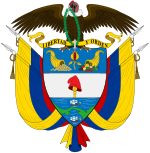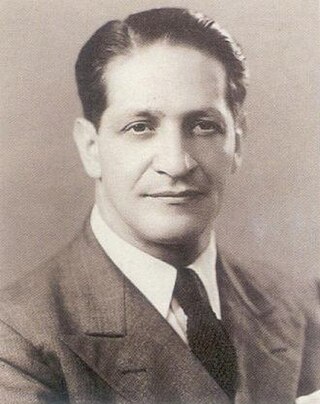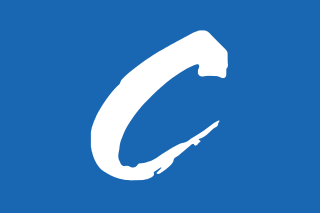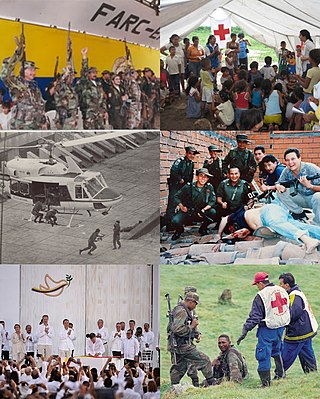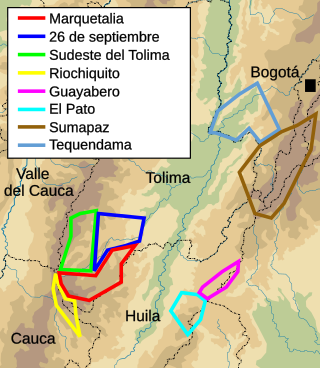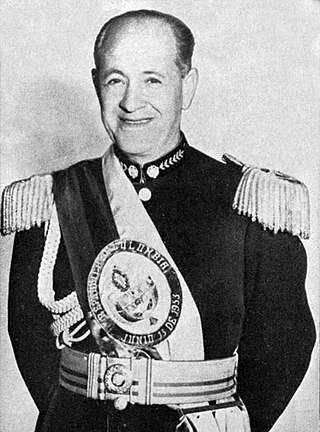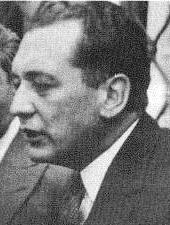1949–1953
Initially, Liberal leaders in Colombia worked with the Conservative government to stop uprisings and root out Communists. [11] [15] In May 1949, Liberal leaders resigned from their positions within the Ospina Pérez administration, due to the widespread persecution of Liberals throughout the country. [15] Attempting to end La Violencia, the Liberals, who had majority control of Congress, began impeachment proceedings against President Ospina Pérez on November 9, 1949. [15] In response, Ospina Pérez dissolved the Congress, creating a Conservative dictatorship. The Liberal Party decided to stage a military coup, and it was planned for November 25, 1949. [15] However, many of the party members decided it was not a good idea and called it off. One conspirator, Air Force Captain Alfredo Silva, in the city of Villavicencio, had not been notified of the abandonment of the plan and carried it out. After rallying the Villavicencio garrison, he disarmed the police and took control of the city. [15] Silva proceeded to urge others in the region to join the revolt, and Eliseo Velásquez, a peasant guerrilla leader, took Puerto López on December 1, 1949, as well as capturing other villages in the Meta River region. [15] In this time, Silva was caught and arrested by troops from Bogotá coming to take back control of Villavicencio. [15]
In 1950, Laureano Gómez was elected president of Colombia, but it was a largely manipulated election, leading Gómez to become the new Conservative dictator. [16]
After Alfredo Silva's disappearance, Velásquez assumed power of the forces in the Eastern Plains that, by April 1950, included seven rebel zones with hundreds of guerrillas known as the "cowboys". [15] While in command of the forces, Velásquez suffered from a superiority complex, leading him to commit abuses including body mutilation of those killed. [15] Without sufficient arms, during the first major offensive of the Conservative army, the Liberal forces took major losses and confidence in Velásquez was lost. [15] New populist leaders took control of the different groups of rebels and eventually came together to impose a 10% tax on wealthy landowners in the region. [15] This tax created divisions from the wealthy Liberals and the Conservative government used them to recruit counter guerrillas. The Conservative army then increased its offensive attacks; committing atrocities along the way, they burned entire villages, slaughtered animals, and massacred suspected rebels, as well as set up a blockade of the region. [15] The rebels were able to combat the offensive with small, covert, attacks to capture outposts and supplies. By June 1951, the government agreed to a truce with the guerrilla forces and they temporarily lifted the blockade. [15]
A few months after the truce, larger army units were sent to the Eastern Plains to end the Liberal revolt, but they were still unsuccessful. [15] In this time, the Liberal leadership in Bogotá realized the Conservatives were not giving up power any time soon, and they wanted to organize a national revolt. In December 1951 and January 1952, Alfonso López Pumarejo, the former Colombian president and leader of the Liberal Party, made visits to the Eastern Plains to renew his alliance with the "cowboys". [15] When López Pumarejo returned to Bogotá he issued declarations stating that the guerrillas were not criminals but were simply fighting for freedom, and in response the Conservative dictatorship shut down the newspapers and imposed strict censorship. [15] 1952 passed with only small skirmishes and no organized guerrilla leader, but by June 1953, Guadalupe Salcedo had assumed command. [15]
In 1952 the future revolutionary leader Ernesto "Che" Guevara, then an unknown young man traveling through South America, briefly visited Bogotá. In a letter he wrote to his mother on July 6, 1952, later published in "The Motorcycle Diaries", Guevara noted that "There is more repression of individual freedom here than in any country we've been to, the police patrol the streets carrying rifles and demand your papers every few minutes". He went on to describe the atmosphere as "tense" and "suffocating", even hypothesizing that "a revolution may be brewing".
In other parts of Colombia, different rebel groups had formed in throughout 1950; they formed in Antioquia, Tolima, Sumapaz, and the Middle Magdalena Valley. [15] On January 1, 1953, these groups came together to launch an attack against the Palanquero Air Base, with the hope of using the jet planes to bomb Bogotá and force the resignation of the Conservative dictatorship. [15] The attack relied entirely on surprise to be successful, but the rebels were spotted by the sentry posts and were quickly hit with machine gun fire. [15] The attempt was a failure, however it did incite fear into Bogotá elites.


